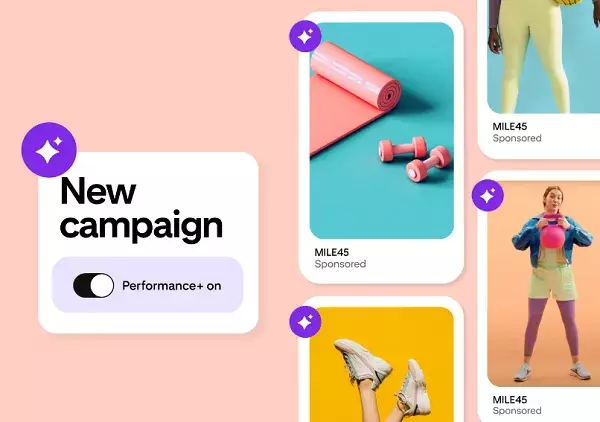In an era increasingly dominated by technology, social media platforms are continuously evolving to enhance user engagement and optimize ad performance. Pinterest, a platform renowned for its unique blend of inspiration and discovery, has stepped into the artificial intelligence arena with the introduction of “Performance+.” This latest offering is reminiscent of Meta’s Advantage+, utilizing advanced machine learning and internal user insights to streamline the advertising process. As the digital landscape evolves, Pinterest Performance+ seeks to redefine how brands interact with users, shifting the paradigm toward automation and efficiency.
At its core, Performance+ aims to simplify the campaign management process, allowing advertisers to focus on creativity while automation handles the technicalities. This initiative permits advertisers to target specific objectives—be it Consideration, Conversions, or Catalog Sales—with a more systematic approach. Pinterest’s new ad product is equipped with sophisticated tools that assist in targeting, ad budgeting, and creative generation. This comprehensive automation raises a pivotal question: can brands truly rely on AI-driven systems to manage critical aspects of their marketing strategies?
While some advertisers express concerns about relinquishing control to algorithms, Pinterest argues that trusting in their system’s intelligence can yield substantial results. Data from early testing phases revealed that many advertisers experienced at least a 10% improvement in vital metrics, such as cost per acquisition (CPA) and cost per click (CPC). These promising results invite skepticism about whether automation can be trusted to handle nuanced marketing efforts effectively.
Pinterest recognizes that while complete automation can drive excellent outcomes, it is essential for advertisers to have some degree of control over their campaigns. Thus, the platform allows brands to automate specific components while retaining oversight on others. This balanced approach helps to alleviate concerns about the loss of control, offering a middle ground where both human intuition and machine intelligence work in tandem.
The introduction of Performance+ also brings about changes in bidding strategies, as Pinterest has expanded its optimization capabilities to include Return on Ad Spend (ROAS). This enhancement signifies a crucial evolution in how advertisers can approach their campaigns, allowing them to prioritize high-value conversions rather than maximizing clicks or conversion volume alone. Such flexibility in strategy can significantly impact how brands allocate their resources during critical advertising seasons.
The holiday shopping season is on the horizon, and Pinterest is positioning itself as a more potent player in driving consumer engagement. By offering personalized promotions based on users’ search and pin history, the platform enables advertisers to target their audience more effectively. This personalized approach is instrumental in connecting Pinners with promotions and sales that resonate most, making it easier for brands to capture consumer interest.
Moreover, the introduction of Deals ads modules ensures that discounts and promotions receive heightened visibility within the Home Feed. This heightened exposure is especially critical during holiday shopping periods when users are actively seeking deals and inspiration. By giving brands the tools they need to stand out amidst the clutter, Pinterest elevates its role in the product discovery process, making it a valuable partner in driving sales.
As Pinterest continues to innovate and enhance its advertising offerings, Performance+ embodies a significant shift toward an AI-driven future. While brands may grapple with the implications of automation—balancing the need for control against the benefits of AI—the potential for improved campaign performance cannot be understated. The blend of machine learning insights and creative advertising strategies holds the promise of a more efficient, effective marketing framework.
Ultimately, as advertisers prepare for an increasingly competitive landscape, embracing platforms like Pinterest and their innovative tools could be fundamental in understanding and catering to a digitally savvy consumer base. With AI leading the charge, the intersection of creativity and technology in advertising will likely become more pronounced in the years to come, setting the stage for a dynamic evolution in how brands communicate with their audiences.

